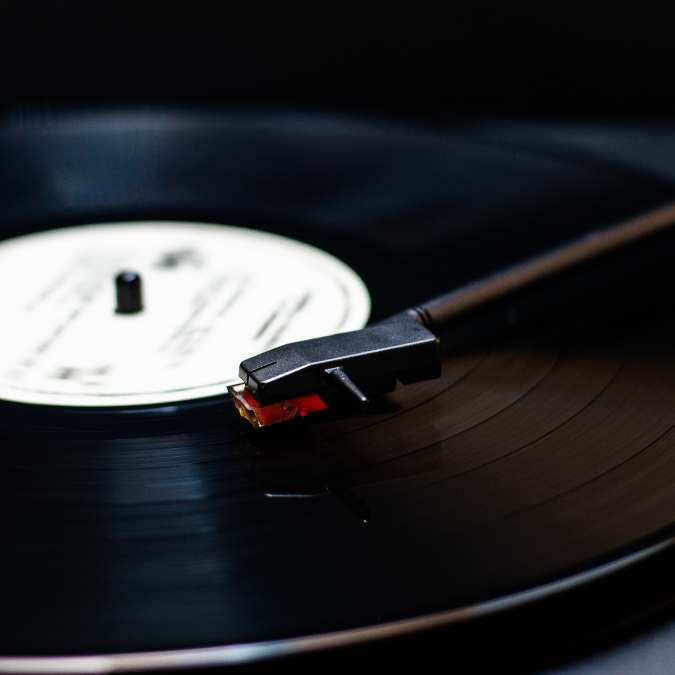
The Power of Music to Terrify the Mind
Close your eyes. 🎶
No flashing lights. No monsters. No blood.
Yet, within seconds, a simple sound — a screeching violin, a deep drone, a haunting whisper — sends chills down your spine.
That’s the power of soundtracks that produce fear without images.
We often think that fear in movies or games comes from what we see. But in truth, what we hear is just as important — and sometimes, even more terrifying. Certain musical scores can make our hearts race and our skin crawl without showing a single drop of blood.
In this article, we’ll explore the fascinating world of fear-inducing soundtracks, why they affect us so deeply, how composers create them, and which pieces of music can scare you even with your eyes closed. 👁️🎵
Why Music Alone Can Scare Us 😨
Before diving into examples, it’s worth asking: why can music alone make us afraid?
Science has an answer — and it’s both fascinating and primal.
Researchers in neuroscience and psychology have shown that fearful sounds trigger the brain’s amygdala, the region responsible for processing threats and emotional reactions.
Certain characteristics of “scary music” mirror the sounds of danger in nature — such as:
- High-pitched screeches, similar to animal distress calls.
- Sudden loud noises, like thunder or explosions.
- Low-frequency rumbles, that the body interprets as approaching danger.
- Unpredictable rhythms, which make the brain feel uneasy.
So, even without visual cues, our brains instinctively react to these sounds as if something threatening were near. That’s why a few notes from a horror soundtrack can raise your heartbeat or give you goosebumps — even in total darkness.
The Birth of Fear in Music: From Classical to Modern Horror 🎼👻
Long before horror movies existed, composers were already exploring the musical language of fear.
1. The Classical Era: Early Experiments with Darkness
- Johann Sebastian Bach – “Toccata and Fugue in D Minor” (1700s)
This dramatic organ piece, often used in Gothic films and haunted house scenes, is one of the first examples of music that sounds evil. The deep organ tones and dissonant harmonies make listeners feel both awe and dread. - Hector Berlioz – “Symphonie Fantastique” (1830)
In this groundbreaking orchestral work, Berlioz depicted hallucinations, madness, and death. The famous “Dream of a Witches’ Sabbath” movement still gives chills — with its eerie bells and distorted version of a church chant. - Modest Mussorgsky – “Night on Bald Mountain” (1867)
Inspired by a witches’ sabbath, this piece builds tension with wild rhythms and chaotic energy. It was later used by Disney in Fantasia, proving that music alone could conjure demonic imagery.
2. The 20th Century: Sound Becomes Psychological
As technology advanced, film composers began to experiment with how sound could manipulate emotion.
- Bernard Herrmann – “Psycho” (1960)
The infamous shower scene from Alfred Hitchcock’s Psycho is one of the most studied moments in film history — and it works even without the visuals. The screeching violins imitate human screams, triggering an instinctive sense of terror. - Krzysztof Penderecki – “Threnody for the Victims of Hiroshima” (1960)
This avant-garde piece uses screeching strings and chaotic tone clusters to evoke pure agony. It has been used in numerous horror films (The Shining, The Exorcist), though it was not written for cinema — proving that music itself can terrify.
How Composers Create Fear Through Sound 🎹💀
Ever wondered why some sounds make you feel safe — and others make you want to run?
Here are the key techniques composers use to build fear without needing visuals:
1. Dissonance
When two notes clash and sound “wrong” together, our brains register discomfort. Horror composers love this tension — it’s musical anxiety.
Example: The opening of The Shining soundtrack uses heavy dissonance to create a feeling of unease from the very first second.
2. Silence and Sudden Shocks
Sometimes, it’s the lack of music that creates fear. When sound stops abruptly, the listener’s imagination fills in the danger.
Example: Many horror soundtracks use silence just before a loud, shocking chord — a musical “jump scare.”
3. Infrasound (Low Frequencies)
Frequencies below 20Hz can’t be heard clearly, but they can be felt — vibrating in your body. These sounds are associated with earthquakes or large predators, unconsciously triggering fear.
Some theaters and haunted houses even use infrasound to intensify unease.
4. Unpredictable Rhythms and Irregular Beats
Our brains love patterns — but horror music often breaks them. A rhythm that doesn’t repeat or resolve leaves the listener on edge.
5. Human-like Sounds
Whispers, breaths, or distorted voices make us feel uncomfortable because they sound alive. When composers mix human elements with instruments, the result is deeply disturbing.
Soundtracks That Terrify Without Images 🎧🔥
Let’s explore some of the most powerful and fear-inducing soundtracks — music that can make you shiver even if you’ve never seen the movie.
1. Krzysztof Penderecki – “Polymorphia” (1961)
Used in The Shining and The Exorcist, this orchestral nightmare features violins screaming, cellos moaning, and sudden silences. It’s structured chaos — and it evokes raw terror through sound alone.
2. György Ligeti – “Requiem” (1965)
Stanley Kubrick used this piece in 2001: A Space Odyssey, but even without visuals, it’s deeply unsettling. The human voices seem to cry and wail in dissonant harmony, blurring the line between music and madness.
3. John Carpenter – “Halloween Theme” (1978) 🎃
Simple, repetitive, and icy cold — the piano rhythm of Halloween’s theme is instantly recognizable. The brilliance lies in its minimalism: a heartbeat-like rhythm that feels mechanical and human at the same time.
4. Mike Oldfield – “Tubular Bells” (1973)
This progressive rock piece became iconic after The Exorcist used it — but even by itself, its chiming melody and eerie repetition create an atmosphere of spiritual unease.
5. Wendy Carlos & Rachel Elkind – “The Shining Main Title” (1980)
Based on a medieval hymn about the Last Judgment, this electronic reimagining turns sacred music into something apocalyptic. The deep synths vibrate with dread — proving that electronic music can be as terrifying as an orchestra.
6. Amon Tobin – “The Lighthouse” (2019)
This modern soundtrack blends deep drones, metallic echoes, and distorted textures. Even without the film, it creates a sense of claustrophobia and paranoia. It’s proof that fear in sound has evolved — and digital music can disturb as effectively as classical composition.
7. Trent Reznor & Atticus Ross – “Gone Girl” (2014)
While not a horror movie, its soundtrack uses subtle electronic dissonance to evoke psychological discomfort. It shows that fear doesn’t always come from violence — sometimes it’s about emotional tension.
The Science of Fear in Sound 🧠🔊
Modern studies reveal that scary soundtracks activate primal survival mechanisms in the human brain.
A 2017 study from the University of California found that sounds with nonlinear properties — like screams, growls, or instrument distortions — cause the body to release adrenaline. These sounds are naturally associated with distress or danger in animals.
Moreover, the absence of predictable rhythm or melody makes the brain work harder, increasing tension and anxiety. In other words: your body can’t relax when it doesn’t know what’s coming next.
That’s why even a few seconds of eerie sound can make you feel like something bad is about to happen — even in total silence or darkness.
Fear Without Vision: Why It Works So Well 🎭
Sound has an advantage over images: it’s invisible. You can’t close your ears.
When music or sound design is well-crafted, it can:
- Enter your subconscious before you even realize it.
- Create tension without explanation.
- Make your imagination work against you.
In other words, fear born from sound is personal. Each listener imagines their own monster, their own darkness. That’s why these soundtracks remain effective long after the movie ends — because the fear they awaken comes from within.
Modern Examples: Fear in Video Games and Sound Art 🎮🎧
Today, fear-inducing soundtracks aren’t limited to movies.
- Akira Yamaoka – “Silent Hill 2” (2001)
This video game score uses industrial noise, metallic banging, and ambient drones to create psychological terror. Many players report feeling anxious just from the sound — even in safe parts of the game. - Ben Frost – “Dark” (Netflix, 2017–2020)
The score combines deep bass, distorted strings, and mechanical hums to build existential dread. It’s more atmospheric than melodic — perfect for modern audiences seeking subtle psychological horror. - Experimental Sound Artists like Tim Hecker or Lustmord have built entire careers on creating “dark ambient” music, where textures and tones, not melody, provoke a sense of unease.
Conclusion: The Invisible Terror of Sound 🔥🎶
Scary soundtracks don’t need monsters, shadows, or screams. They rely on something far more powerful — the imagination.
Music that produces fear without images is an art form of its own: it manipulates the body, confuses the mind, and awakens ancient instincts. From Bach’s organ to Carpenter’s synth, from Penderecki’s chaos to Reznor’s minimalism, composers have proven that sound alone can summon fear — and beauty — in equal measure.
So next time you hear a faint violin, a heartbeat-like rhythm, or an unexplainable whisper in the dark…
Don’t turn on the light. Just listen. 👂💀
Sources 📚
- Journal of Neuroscience (2017): “Acoustic Features of Fear and Their Neural Processing.”
- Oxford University Press – The Psychology of Music and Emotion (2020).
- Berlioz, H. Symphonie Fantastique (1830).
- Penderecki, K. Threnody for the Victims of Hiroshima (1960).
- Carpenter, J. Halloween Original Motion Picture Soundtrack (1978).
- Reznor, T. & Ross, A. Gone Girl Soundtrack (2014).
- Hecker, T. Virgins (2013).
- Yamaoka, A. Silent Hill 2 Soundtrack (2001).

